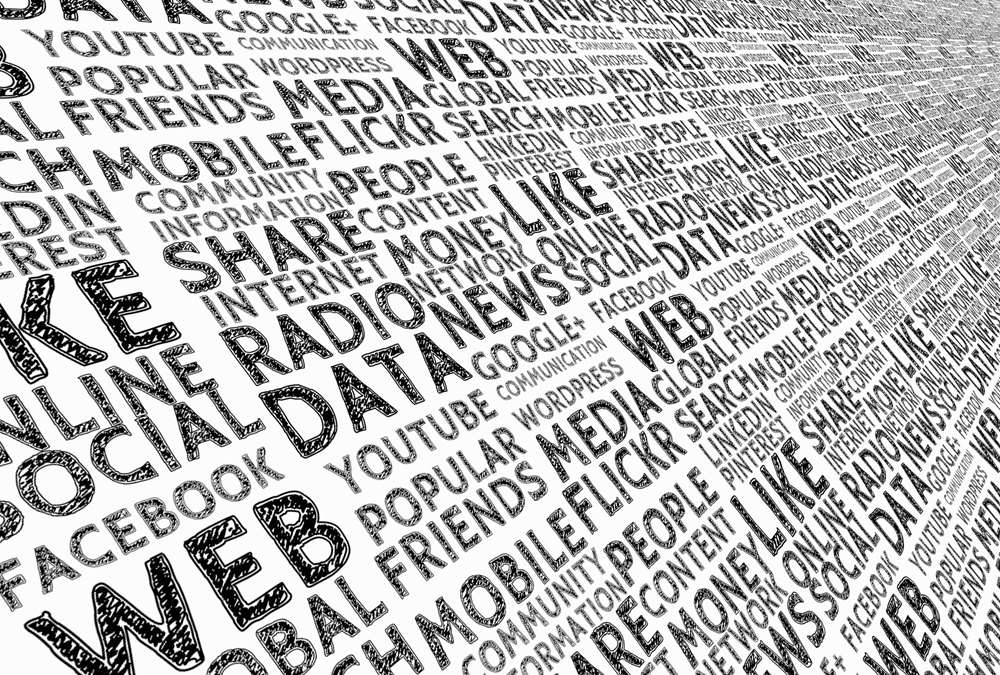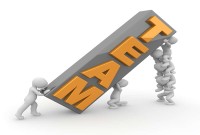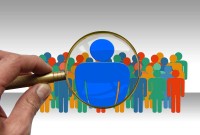- Home
- Business Processes
- Industry Knowledge
- Aerospace Industry
- Automotive Industry
- Banking Domain
- BFSI Industry
- Consumer/ FMCG Industry
- Chemicals Industry
- Engineering & Construction
- Energy Industry
- Education Domain
- Finance Domain
- Hospitality Domain
- Healthcare Industry
- Insurance Domain
- Retail Industry
- Travel and Tourism Domain
- Telecom Industry
- Leadership Skills
- eLearning
- Home
- Leadership
- Change Management
- Digital World of Work
Digital World of Work
Technological advancement has brought about radical changes in the methods of work and also in the organizational structure and talent strategies. The future of work is transforming our work, workforce, and workplace. Some important trends observed during recent times are discussed below.
Technological advancement has brought about radical changes in the methods of work and also in the organizational structure and talent strategies. The future of work is transforming our work, workforce, and workplace. Some important trends observed during recent times are discussed below.
- Globalization of market
- Changing methods of production
- Economic instability
- Global Pandemic like COVID-19
- Blending of the physical and virtual work environments
- Upskilling and continuous learning of the workforce
- Advances in technology such as robotics and the cloud
- Digital world of work
Globalization of market
"Globalization” is the process by which businesses or other organizations develop international influence or start operating on an international scale. Globalization impacts almost every aspect of business today. Companies are expanding to international markets and establishing marketing, manufacturing, or research and development facilities in several foreign countries. Companies need to focus on expanding their geographic diversification and investment in secondary markets to mitigate and manage risk in times of disruption.
With globalization, they need to create business units scattered around the world along with suppliers, manufacturers and distributors. As they mature, they become stateless corporations who have market in the whole world. They create multiple subsidiaries which are interlinked to each other and competitive position in one country significantly influences other countries in whole world. To meet the need of globalization, the top managers must redesign the organization's structure to one that is adaptive with the changing environment. This rise in complexity of size and organizational management will create challenges for leaders as operating models evolve.
Changing methods of production
Job production involves the production of single, individual items. Batch production means the production of batches of similar products. Flow production involves passing sub-assemblies/parts from one stage of production to another in a regular flow. Mass production involves the production of products on a large scale. Most companies plan a strategy to go to market with their products. In customer-orientation, the organization is aligned towards the production of a single product according to the customer's demand. The process-oriented strategy has the goal of optimizing processes along the order flow. Task-oriented structuring strategy aims at repartitioning similar tasks. Product-oriented structuring aligns according to the requirements of products or product groups. Different goods may require different production processes influencing the organizational design.
Economic instability
Economic instability involves a shock to the usual workings of the economy. In a serious crisis, uncertainty can reach extreme levels, and the normal way of working becomes overstrained. At such times traditional management operating models rarely prove adequate, and organizations with inadequate processes can quickly find themselves facing existential threats. In the financial crisis of 2008–09, many organizations were simultaneously affected. After the global financial crisis, global mergers and acquisitions activity accelerated, and many companies were consolidated to avoid failure. Organizational structure redesign may be unavoidable to improve the efficiency of the organization activity under conditions of instable external environment. During severe global crisis, managers need new operating models to respond quickly to the rapidly shifting environment and sustain their organizations through the change.
Advances in emerging technology (robotics, cloud etc.)
Technology empowers companies to grow faster, produce better products and serve customers more effectively. It connects a workforce, analyzes data and allows products to be manufactured precisely. Companies wishing to harness technological advances as a competitive advantage must constantly seek newer, faster and better technologies to improve their business. Emerging technologies include a variety of technologies such as educational technology, information technology, nanotechnology, biotechnology, cognitive science, robotics, and artificial intelligence. Robotics deal with automated machines that can take the place of humans in dangerous environments or manufacturing processes. Robotic process automation (RPA) is a software technology that makes it easy to build, deploy, and manage software robots that emulate humans actions interacting with digital systems and software. Recognizing the possibilities or threats of new technologies introduced in the market allows the company to react by realigning its products or services, processes, skills, logical forms of profit and value network relationships. Changes are made to business models and these are reorganized to deliver value to customers
Global Pandemic like COVID-19
Uncertainty levels from recent global shocks do not approach those of the present COVID-19-triggered crisis.
The overnight rush into remote working sent organizations into a spin, one that caused tremendous anxiety and accelerated the adoption of technology to minimize damage to operations and business. Global institutions, both public and private temporarily moved to remote working. How post pandemic world will operate with most likelihood of safety restrictions remaining a priority and how to approach work, working environment, expectations and employee relations need to be seen. While organization design in the post-pandemic era will be guided by individual organizational priorities, and culture, it will also be affected by the flexibility in mindset, agility to transform and adapt and risk appetite of leaders. It is clear that the future of the workplace is indeed hybrid. How soon organizations accept, respond and execute their action plan for redesigning their organization for the now and future of work, will determine their ability to come out successful, sustainable and resilient on the other side of the pandemic.
Blending of the physical and virtual work environments
A recurring theme across organizations is that of a hybrid workplace, one that allows employees the flexibility to choose between working from home or office, or even co-working spaces and satellite offices, whatever works best for employees, ensuring no compromise on productivity and well-being. Recent pandemic has proved beyond doubt that while connected on digital platforms, members of the modern workforce can work anywhere, at any time. These changes are impacting all industries as advances in technology fundamentally change the work itself, who does the work, and where it needs to be done. In a digital world, machines and humans will be enabled to do what they do best independently and in concert with each other. Companies will challenge the idea that work should be performed in a specific physical location by exploring ways to digitize some or all work through advances in technologies. An organization will be made up of many types of workers and will engage partners and other key stakeholders anywhere in the world. The future workplace will blend the physical and virtual environments and will deliver a consistent employer identity to all types of employees, contractors, and other stakeholders. Personalized experiences will empower people to be their best, balanced selves. Collaboration tools and platforms will support dynamic work locations and asynchronous collaboration.
Upskilling and continuous learning of the workforce
With almost all meetings now happening remotely, prospective employees need to have the ability to drive a project and collaborate with the team by communicating effectively. Employees who demonstrate the ability to work productively without direct supervision or who are capable of being independent contributors will also be sought after by companies. Some of the other key skills to be in demand are extensive technical knowledge and flexibility to take up a task or work from the office when necessary. At the supervisory level, companies will look for candidates who can bring in new skills that fit new ways of working, specifically those who can effectively manage, supervise and engage their teams working from remote locations. Most importantly the candidates should possess the strength, confidence and empathy to handle dynamic, evolving scenarios and situations. Future organizations will identify, attract and engage people with the right skills and experience to achieve its mission and purpose.
As organizational complexity complicates career pathing, companies will need to provide reskilling and career development support — for example, by developing resources and building out platforms to provide visibility into internal positions. Industry leaders echo the need to reskill not just for new technologies, but also for the new workplace. There will also be a need to customize performance management and extend career development support. Continuous learning will support the upskilling needed across the workforce to address looming talent shortages.
Digital world of work
Modern employees will not be geographically bound, so organizations that embrace the remote/hybrid workplace model, evolve internal structures to facilitate dispersed teams and successfully reskill employees are more likely to be successful in the future. The organizations must focus on transcending the organization’s culture beyond the physical office space backed by advanced IT infrastructure. Future employees will be multi-faceted and will more readily adopt newer technologies like Cloud Computing; Artificial Intelligence & Big Data Analytics. Cybersecurity; Mobile & Web Development and Internet of Things, along with soft skills will certainly thrive in a virtual/hybrid work environment.”
Summary
The trends that define the future of work are leading to an “unleashed” organization. Many organizations have begun to explore the Future of Work, quickly build on these practices, and scale their business models as an initial response. An organization with a Future of Work mindset will be more resilient at coping with uncertain times and will be able to adapt and thrive.
Related Links
You May Also Like
-
Charles Darwin had once commented that “It is not the strongest or the most intelligent who will survive but those who can best manage change.” Agility means the capability of rapidly and efficiently adapting to changes and recently, agility has been applied in the context of software development, agile enterprise, and agile leadership. Agile leaders play an important, even essential, role in scaling agility in an organization. Understand how being an agile leader helps in effectively catalyzing organizational change.
-
Understanding of how individuals of different cultures interact with each other is very important. Not all individuals can adapt to the leadership styles expected in a different culture whether that culture is organizational or national. In a fast-paced business environment, developing a richer understanding and sensitivity to other cultures is a skill that leaders must possess. Learn to be effective in a cross-cultural setting.
-
Change & Culture of Innovation
Predicting the future is a tricky business but managers need to have a future perspective in order to take business advantage and remain competitive. They need to drive and introduce constructive change to the business of the enterprise. The first step to creativity and innovation is to drive a culture of Innovation. Managers need to focus on developing future mindset all the time to keep pace with the unfolding future.
-
As we know change is inevitable as market expectations are not static, new technology is constantly being developed, and organizational responses are inevitable to these sequences. It is a simple matter of business evolution. If every manager and every employee could have some understanding of the triggers of change and their relationships with each other, then the acceptance to change would be easier.
-
Team Development by Building Trust
As your team begins to work together, you need to establish a way each team member can exchange ideas and build mutual trust. Successful groups are built on trust and collaboration. A free exchange of ideas, in an open environment, will allow your team to get to know each other and enable you to check on how they work together. Learn some tips to help build team trust and establish personal bonds.
-
Tools for Developing Your Team
If a manager has too many weak spots in the talent of the team, the ability to empower the team members to independently execute the project is impaired. Assignments fall behind schedule or stretch out because the needed skills or knowledge are not in place when needed. To successfully execute important projects, hiring talented people, and increasing the talents of existing staff are most important.
-
Team Foundation in Forming Stage
This is the first stage of team development. This is the stage when the foundation of the team is laid. During the Forming stage, team members have a high dependence on their leader for guidance. Learn the practical strategies you can use during this stage to help your team develop into a highly effective performing team.
-
At times like this, more than ever, it is essential that the organizations appreciate the human resource management skills required to successfully handle the transformation of industry and create an innovation culture. Read more to understand, how as a manager you can help in cultivating a culture of continuous innovation and adaptation to change.
-
Participative leadership is one of the most effective styles and creates higher productivity, better contributions from group members, and increased group morale. The democratic leadership style consists of the leader sharing the decision-making abilities with group members by promoting the interests of the group members. Learn more about this leadership style and situations when it is effective.
-
Listening is the foundation for good communication. It is also the hardest skill to master. Do you listen to confirm what you already know, or do you listen to explore and learn new things? How can we create receptive communication as a listener? The real art of listening involves awareness and sensitivity to the feelings of the speaker because it is at the feeling level that genuine connection, relationship, and healing occurs.
Explore Our Free Training Articles or
Sign Up to Start With Our eLearning Courses

About Us
Learning
© 2023 TechnoFunc, All Rights Reserved










